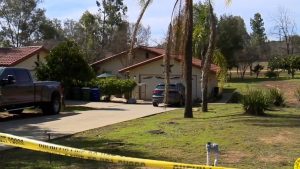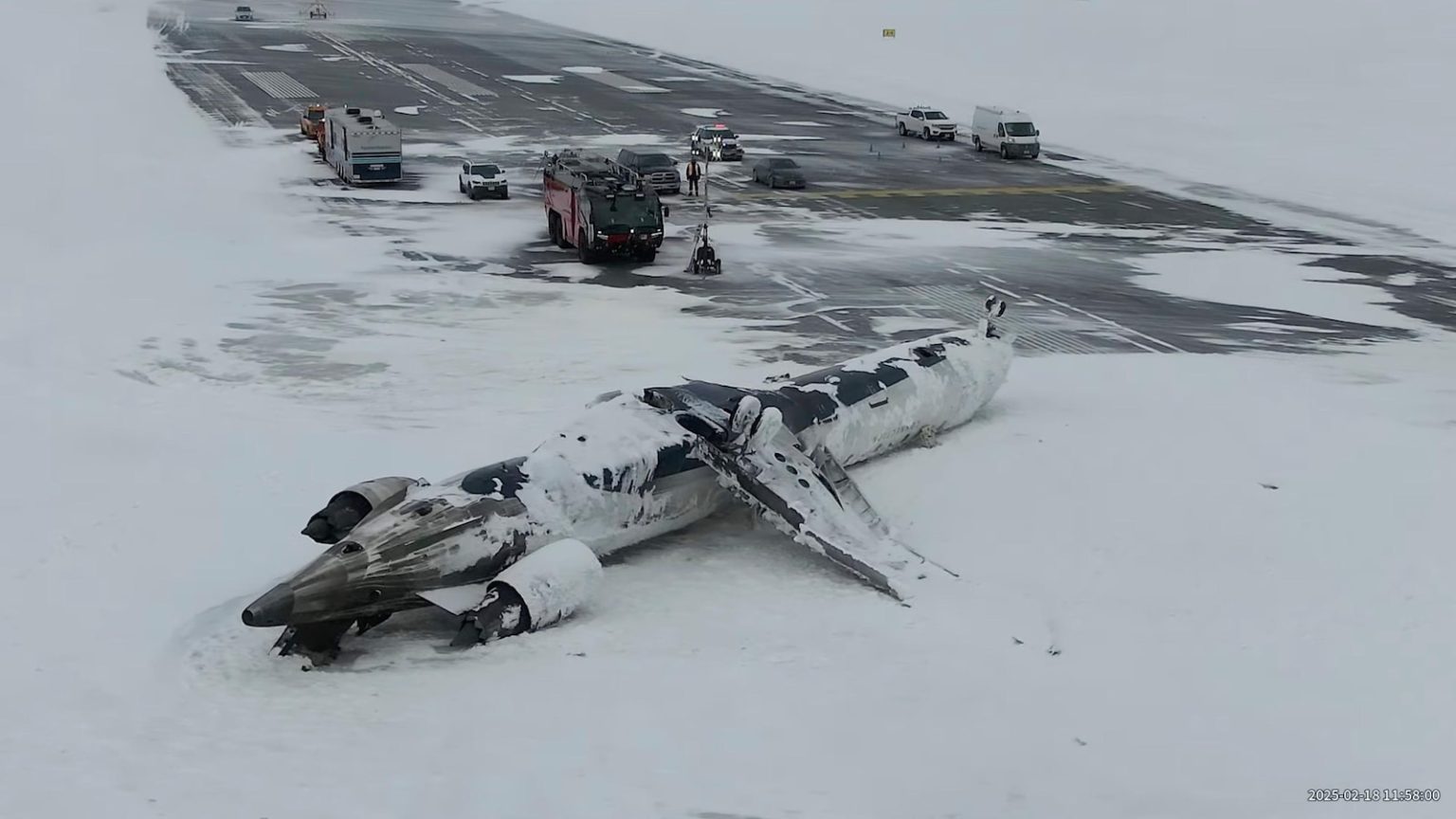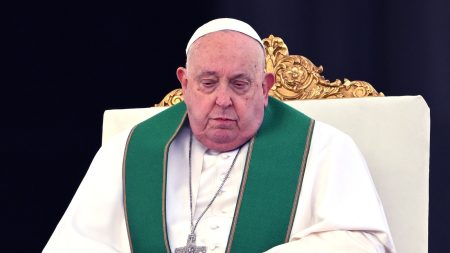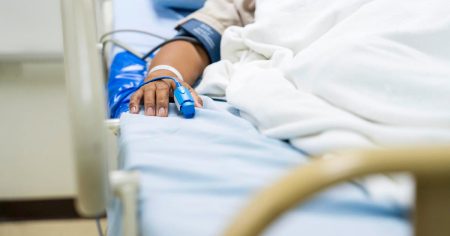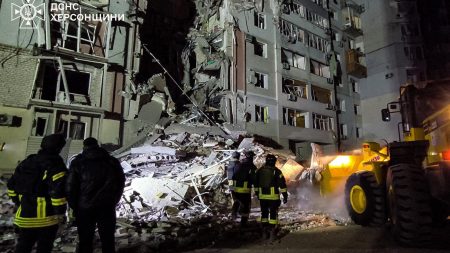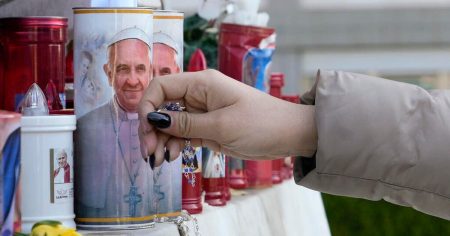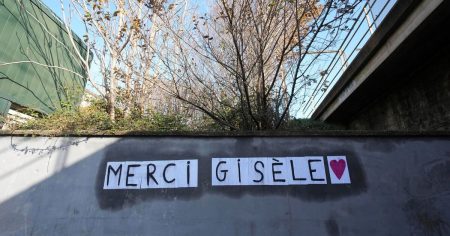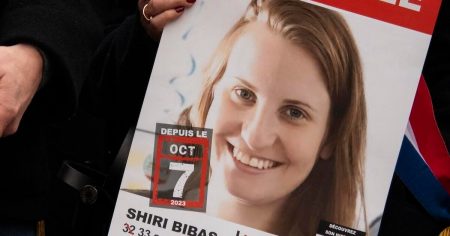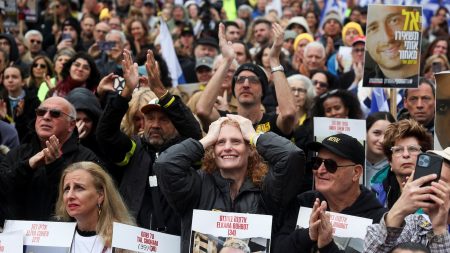A Narrow Escape: The Story of Delta Flight 4819
On Monday, Delta Air Lines flight 4819 crash-landed at Toronto’s Pearson International Airport, leaving 80 passengers and crew members shaken but alive. Among them was Peter Carlson, a 40-year-old former paramedic from Minneapolis, Minnesota, who was traveling to Toronto to speak at a convention for Ontario paramedic chiefs. Carlson’s journey began like any other, filled with anticipation for the event ahead. However, in an instant, his world was turned upside down—literally. The plane experienced a violent impact, flipping onto its side during the crash landing. Carlson, strapped in by his seatbelt, found himself hanging from his seat, staring at the airplane’s ceiling. Blood streamed from a gash on the back of his head as he assessed the chaos around him.
The crash was brutal. The plane’s right wing was sheared off, and jet fuel streamed down the windows. Carlson, despite his injuries, quickly sprang into action. His years of paramedic training kicked in, allowing him to remain calm and focused. He noticed other injured passengers, including one pinned beneath a seat behind him, and knew the priority was to get everyone to safety. “It was a forceful impact, a sideways movement, and suddenly just inverted,” Carlson later recalled. “The only mission was to get out.”
A Friend’s Worst Fear Realized
Meanwhile, Carlson’s friend Michael Nolan, the convention chairman, was waiting to pick him up from the airport. Nolan, a paramedic chief from a county north of Ottawa, noticed a plume of black smoke in the distance and texted Carlson, unaware it was his friend’s plane that was involved. “Are you OK? Something’s going on on the runway,” Nolan wrote. Carlson responded that he was on the tarmac. At first, Nolan thought it meant Carlson’s plane had landed safely. Then, Carlson sent a follow-up text with a picture of his fellow passengers evacuating the upside-down plane.
Nolan’s heart sank. “Knowing that was his reality was absolutely shocking to me and really brought it home,” he said. Instead of attending a convention about the role of paramedics, the two men found themselves in the middle of a real-life emergency. Nolan rushed to the triage area to assist in treating injured passengers. When he arrived, he was greeted by Carlson, who was battered but alive. The two friends shared a heartfelt hug, a moment of relief amid the chaos.
Heroism in the Face of Crisis
Carlson, though injured, quickly shifted into paramedic mode. Despite having transitioned to a desk job over a decade ago, his instincts took over. “I was comfortable with how my body and mind empowered me to do what I needed to do at that point,” he said. He helped assess the situation, ensuring the safety of those around him. However, Carlson was quick to deflect praise, crediting the flight’s four crew members for their bravery and leadership during the evacuation. He marveled at the fact that everyone on board survived, calling it “remarkable” and “amazing.”
The crash left Carlson with bruises, cuts, and a gash on his head, but the mental toll was just as significant. The trauma of the event weighed heavily on him, and by Wednesday, he was questioning whether he could muster the strength to deliver his speech at the convention. “It took me a lot of personal motivation to leave my room,” he admitted. “This morning, I just couldn’t. I was quite emotional about this whole thing and just really want to be home.”
Finding Strength in Community
Despite his struggles, Carlson found the courage to push through. On Wednesday, he delivered a 20-minute speech to the paramedic chiefs, outlining his background, the significance of their work, and the difference they can make. His audience was unaware of the emotional battle he had faced that morning. The paramedic community rallied around him, offering support and solidarity. On Tuesday, National Chief of the Assembly of First Nations Cindy Woodhouse welcomed Carlson into a drumming circle of healing, a touching gesture of compassion. A day later, Ontario paramedic chiefs’ association president Greg Sage honored Carlson’s efforts on the airplane with a certificate, praising his bravery and selflessness.
Carlson’s trip to Toronto began with a hug from Nolan during a very trying time. Two days later, the two friends shared another hug onstage after Carlson accepted his award to a standing ovation. Though he apologized to the crowd for not being as present as he had hoped, his words of gratitude were heartfelt. “Given the events as they’ve played out, I can’t think of a better group of people in terms of taking care of one another in their community and myself,” he said. “So just a very big thank you.”
A Story of Resilience and Gratitude
The crash of Delta flight 4819 will remain etched in the memories of everyone involved. For Peter Carlson, the experience tested his physical and emotional limits, but it also reminded him of the strength and resilience that defines him—and the paramedic community as a whole. The injuries will heal, but the lessons learned from this ordeal will stay with him forever. Carlson’s story is not just one of survival; it is a testament to the power of courage, compassion, and community. As he returned home to his wife and three children in Minneapolis, he carried with him a renewed appreciation for life and a deeper understanding of the bonds that connect us all.
